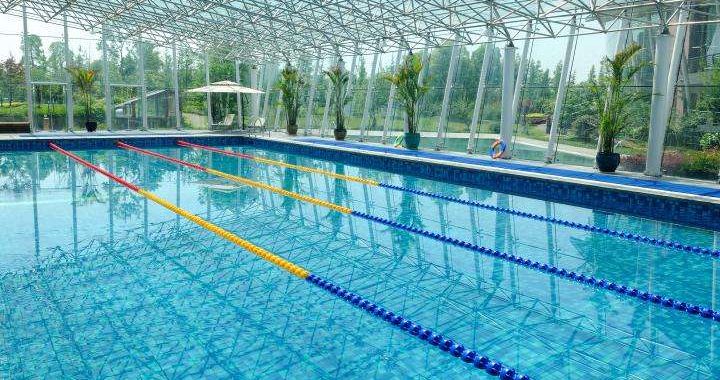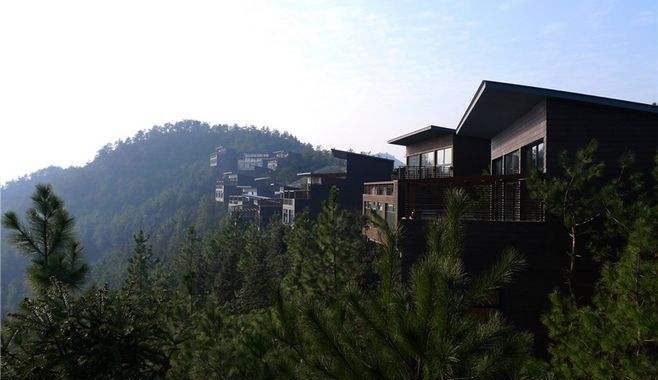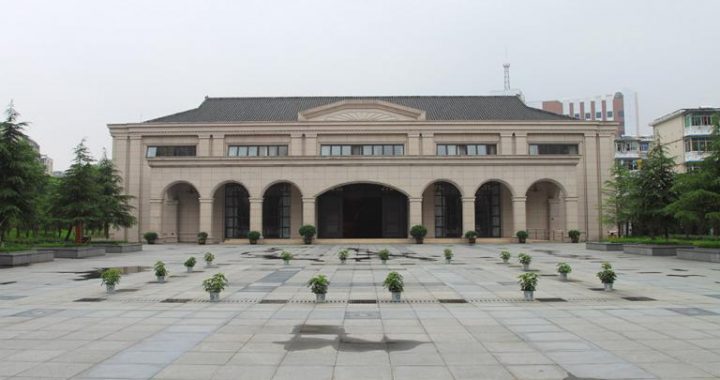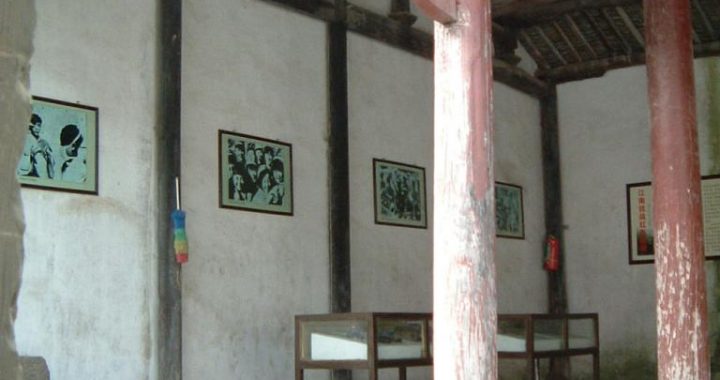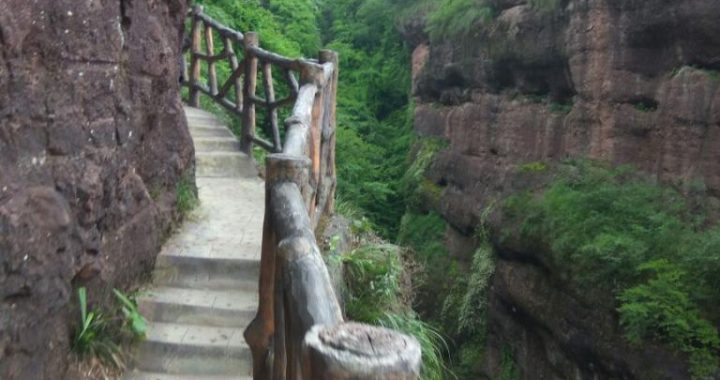Jiaye Tang Book Collection House
6 min readJiaye Tang Book Collection House is one of the most famous private book-collecting buildings in modern China. It covers an area of more than 20mu. The overall design reflects the idea of gardening. The whole house was positioned within an elegantly embellished garden. The house looks not magnificent, but refined and solemn.

Jiaye originates from the inscriptions of “Qin Ruo Jia Ye”that are carved in the golden horizontal plate of a nine-dragon pattern. Golden colour and nine-dragon pattern suggested the sovereignty and the highest status, or symbolized his Majesty in ancient China. The inscribed board was truly bestowed by Puyi, the last emperor of the Qing Dynasty.
The book-collecting house is a brick and wooden structure and thecombination of Eastern and Western styles. The main building has a southern exposure with winding corridors in a square shape. The two-storey construction consists of two separate parts in the front and the back,52 rooms in all. The size of the building is equivalent to seven standard rooms placed side by side, and six wing rooms positioned on the left and the right.
The house is about 35 meters wide from the east to the west, and 53 metersin depth from the front(south) to the back(north). The main hall located at the back row is Jiaye Hall. That horizontal inscribed board of nine-dragon is hung on the mid wall.
The principles of fire prevention, moisture-proof and adequate ventilation are strictly implemented in its construction. It was meticulously designed in advance and carefully constructed according to the requirements of book preservation. The groundwork is made of granite and the level is about 1.6-2.0 meters higher than the ground. The square courtyard at the center is paved with floor bricks. The courtyard was once used as an open area for airing books after the rainy season. April and May are usually the rainy season in the region of the middle and lower reaches of the Changjiang River. Jiaye Book Collection House is surrounded by a river, which strengthens fire prevention and fire extinguishing. All the rooms onthe ground floor are paved with blue bricks, and the space height of roomsreaches to 4-5 meters. Such a design makes the house good for ventilation, wet proof, and heat insulation. The rare books are even more placed within wooden cases with board layers attached inside. It is a reinforced method to ensure books from the moisture damage. The arrangement of rooms is rather reasonable and beneficial to keep and regulate books.
After all, the book house is accepted as a unique sight built in garden.
Entering the small garden, tourists can enjoy flowers, plants and wistaria snensis that spread over the southern side to the house.A pond in the formof lotus occupies the center of the garden. It has an area about 3-4 mu. The rockeries around the pond are piled up with Taihu stones. These rockeriesare similar to the twelve animals, any one of them symbolizes the year in which one is born in traditional Chinese calendar. There is a pavilion called
“Ming Se”on the artificial islet in the mid of the pond. The islet is connected to the side of the pond by a stone bridge. The stone bridge which joins the islet and the edge of the pond has the pavilions “Huan Bi”and
“Zhang Hong”on both ends. The three pavilions form an extra brilliant sight for tourists to enjoy. To one’s surprise,a stone about 2-3 meters, which looks like a crouching tiger in shape, is located on the southwest.

There is a hole in the middle of the stone. When air blowing into the hole, it sounds as the roaring of a tiger. Therefore, the stone is named”Roaring Stone”. The inscription on the stone is from Ruan Yuan who was a famous scholar during the Qing Dynasty. The unique stone has been one of the three peculiar stones in Nanxun town. Jiaye Tang Book Collection House as mentioned above is surrounded by an outlying river, which forms a natural
barrier to get in and out, but a bridge leading to the arched iron gate on the east side provides a passage for visitors. The unique structure of the house, the sceneries of the garden and the circle river are pulled together which creates an unusual sight.
Making a visit to the book collection house, something about its founder Liu Chenggan should be informed. Liu Chenggan, the grandson of Liu Yong, was born in 1882 and died in 1963 at the age of 82. After his grandfather’s death in 1899, he inherited family property from his cousin, Liu Anlan, and became rich and powerful overnight. Liu Chenggan was a man with wide interests. He took great pleasure in purchasing, collecting, writing, editing and cataloguing books as well, but his biggest hobby was reading. He also liked making friends with celebrities. From the year of
1910, he became more active to collect books. He spent a large sum of money collecting books during the next year, as a result, he obtained a great number of ancient books from their former owners. Well-cultured Liu Chenggan knew clearly that it was a difficult task to keep books. Those books collected were easily lost again without taking proper precautions against fire and wet. Out of these considerations, Liu Chenggan chose the place next to Liu’s Family Temple in Little Lotus Manor, and decided to build a special house for collecting and keeping books. The construction of the house started in the winter of 1920 and finished at the end of 1924. Liu Chenggan collected books actively after the house was set up, and tried his best to replenish with rare editions and ancient books. It took him twenty years to gather up 600,000 volumes of books at the cost of 300,000 Liang in silver. The house kept various books amounted to 160,000 sets. According to the local records, when the house was in the heyday of its glory during
1925-1932, it held 200 antique wooden publications from the Song and theYuan Dynasties;50,000 carved publications in the Qing Dynasty; more than
1,200 kinds of local chronicles, and over 200 in series;2,000 kinds of manuscripts, or handwritten copies; more than 1,200 of miscellaneous genres as well as thousands of model rubbings from stone inscriptions. Most of these historical books and collected works that have been kept in the house were published in the Qing Dynasty. Especially some books published in the Song Dynasty are considered as the best treasures of thehouse, such as Historical Records written by Sima Qian of the Han Dynasty, History of the Han Dynasty, History of the Late Han Dynasty, and Three Kingdoms. Many copies of rare books in this house have become the only extant copy or the unique copy.
Jiaye Tang Book Collection House has two main characteristics in respect of book-collecting. Firstly, it is not only attached the label to collect books from the Song Dynasty, but with more care and much effort to store the editions of the Ming Dynasty and the Qing Dynasty. Secondly, the house spared no expense to collect local chronicles widely. Of them 62 treasured editions are the private copies from home cache. Liu Chenggan was not only known by the local people as one of the ancient-book collectors, but also known as a renowned printer with a good reputation for intaglio printing. He printed such kind of books without any intentions to make a profit. Most of the books were presented as gifts to Chinese scholars and Japanese counterparts for study or appreciation.
In 1949, the People’s Liberation Army of China started for the southerncities, the late premier Zhou Enlai instructed the troops in advance to protect the book-collection house properly. After taking up Hangzhou, thelate commander Chen Yi took a chance to visit the book-collection house personally when the PLA troops marched forward on the way to Shanghai via Nanxun. He ordered a company of soldiers to defence there. In November 1951, the whole book-collection house was donated to the State
by Liu Chenggan, and it was taken over and controlled by the Library of Zhejiang Province. The total collections in the house reached to more than
100,000, and the engraved book-sheets had been added to 30,000. Since then the book-collection house itself has been well-protected as well as thecollections. In April of 1981, the house was listed as one of the key historic heritages in Zhejiang Province under the provincial protection, and it is also the historical and cultural unit under the national protection.
Now Jiaye Tang Book Collection House is open to the public in part, and plays the dual-function of providing the book-service for the public, and being a historical and cultural attraction to tourists.

